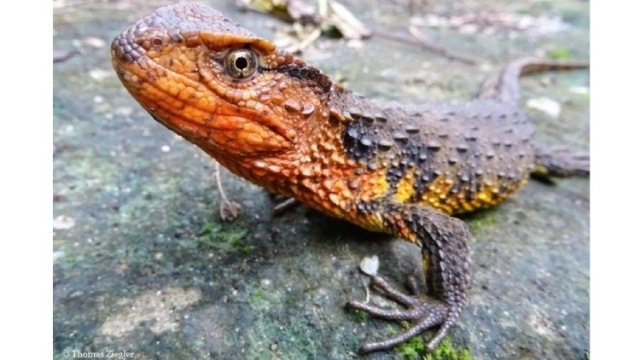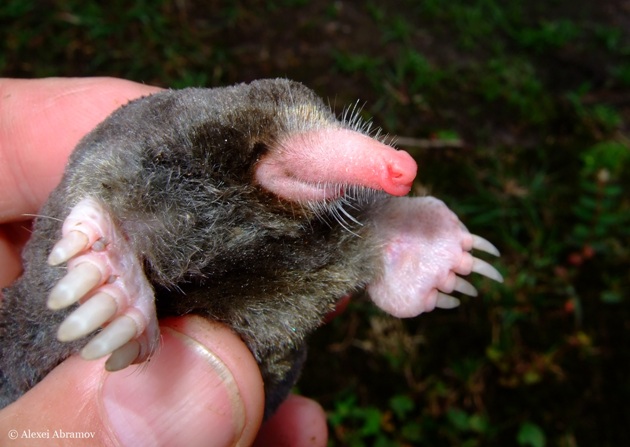[ad_1]
Scientists have discovered 115 new stranger species in the Greater Mekong region, one of Asia’s biodiversity hotspots, in which 65 species have been found in Vietnam, while 33 others have been discovered in Thailand, Myanmar five, Laos 15 and Cambodia has seven species.

The Vietnamese crocodile lizard found in the northern Vietnam’s forests
According to the new Stranger Species report announced on December 19 by the World Wildlife Fund (WWF), three mammals, 11 amphibians, two fish, 11 reptiles and 88 plant species have been found by scientists in Cambodia, Laos, Myanmar, Thailand and Vietnam.
Among them, a vibrantly coloured frog (Odorrana Mutschmanni) is among the five new species discovered in the same karst forest in Northern Vietnam. Two moles (Euroscaptor orlovi and Euroscaptor kuznetsovi) were also discovered in a network of streams and rivers in the region.
The recent discoveries increase the total number of species found in the area, including plants, birds, mammals, reptiles, fish and amphibians up to 2,524 species during 1997-2016.
Stuart Chapman, WWF’s regional representative for Greater Mekong, said that the discovery of more than two new species a week, and 2,500 in the past 20 years, demonstrates how important the Greater Mekong is to global biodiversity. Although the region faces a number of threats, these findings add to the hope that species from giant tigers to small turtles would have a chance of survival.
Among the new species detailed in the report, there is a medium-size Vietnamese crocodile lizard (Shinisaurus crocodilurus vietnamensis), which lives in the freshwater and forest habitats of northern Vietnam and south China. As few as 200 could remain in Vietnam, the lizard is threatened by habitat destruction, coal-mining and collection as a pet. Dr. Thomas Ziegler, the team leader who discovered the species, personified them as Shini – a comic character in children’s comic book about the importance of protecting lizards.

The new mole species, called Euroscaptor orlovi, is one of two mole types found in Vietnam
Two moles (Euroscaptor orlovi and Euroscaptor kuznetsovi) found in the rivers and streams of northern Vietnam give scientists a deeper insight into the history and formation of mammals in Indochina. Dr. Alexei Abramov, one of the discoverers of these two species, said that one of the reasons mole populations can sustainably develop their population is that they live underground in protected areas and thus avoid illegal hunting.
The vibrantly coloured frog (Odorrana mutschmanni), found by a research team led by Dr. Nguyen Truong in the limestone forest of the North, is threatened by quarrying for cement and road construction. The frog’s karst forest home needs new protection, the WWF affirmed.
According to the wildlife conservation NGO, the discovery of these new species comes at a critical time. The Greater Mekong region is under intense development pressure from mines, roads and dams, threatening the survival of the natural landscapes that make it unique. Poaching for bushmeat or the multi-billion pound illegal wildlife trade puts additional pressure on the region’s wildlife, meaning many species could be lost before they are even discovered.
Stuart Chapman added that the species in the Greater Mekong deserve protection from unscrupulous collectors who are willing to pay thousands of dollars or more for the rarest, most unique and endangered species. Illegal wildlife markets in the region operated blatantly, so it was critical that governments improve their enforcement against poaching and close the markets, he suggested.
Nhan Dan
[ad_2]
Source link
